
Need assistance?
Need Assistance? Call Us 0330 058 0631





















 Book a service
Book a service

26/06/2024 • by Lynsey B
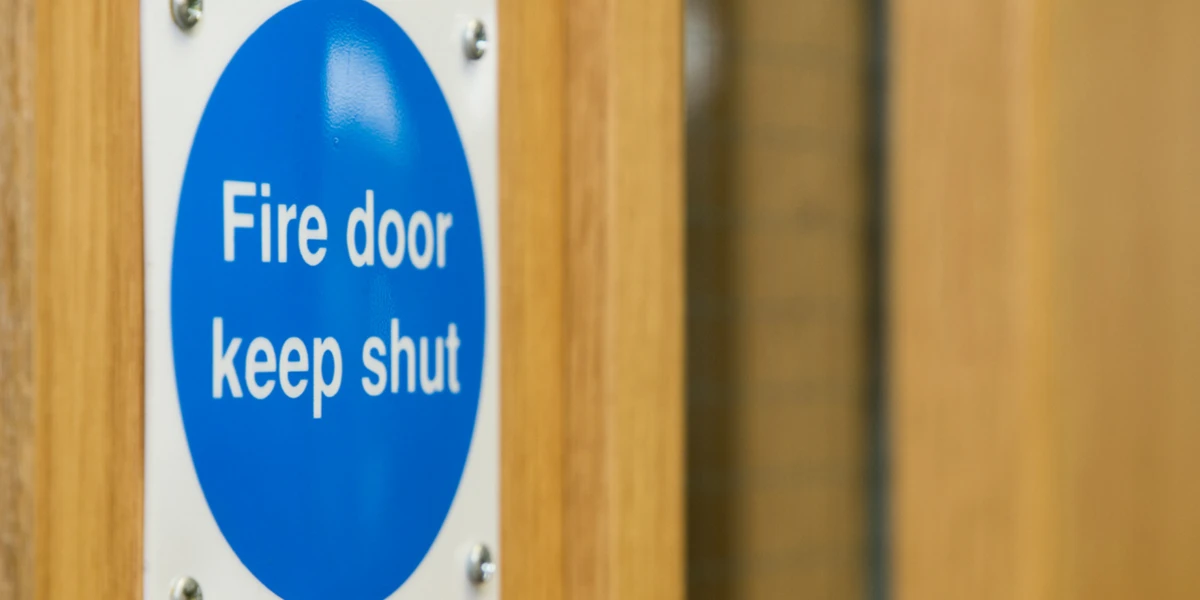
The purpose of fire safety is to ensure the protection of buildings and their occupants. Passive Fire Protection (PFP), is an essential element in modern construction that plays a crucial role in safeguarding lives and property. From understanding what passive fire protection is to differentiating it from active fire protection, this comprehensive guide aims to provide a thorough overview.
Passive Fire Protection (PFP) refers to a range of systems and materials integrated into the fabric of a building. They help to enhance its fire resistance and contain the spread of fire and smoke. Unlike active fire protection systems, such as sprinklers and fire alarms, passive fire protection does not require activation or manual intervention to operate. Its primary purpose is to maintain the structural integrity of a building during a fire. Therefore, allowing occupants time to evacuate safely and giving emergency services a more stable environment in which to operate.
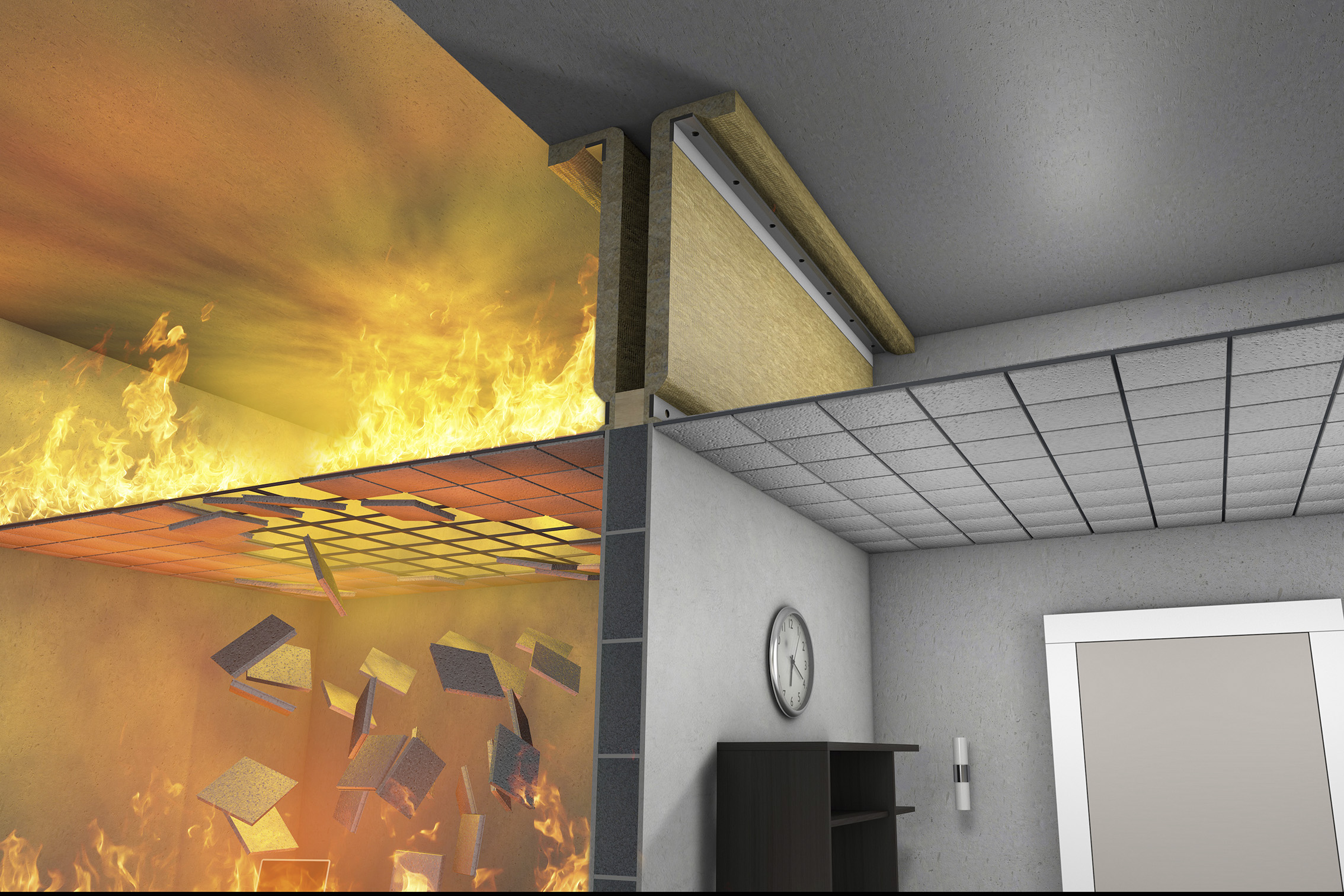
The primary purpose of passive fire protection (PFP) is to contain fires within designated areas. This helps to prevent them from spreading uncontrollably. This containment is important for ensuring the safety of building occupants, protecting property and complying with regulatory requirements. By integrating passive fire protection systems into a building’s design, the risks associated with fire incidents can be significantly reduced.
One of the foremost objectives of passive fire protection is to safeguard human lives. In the event of a fire, the structural stability of a building can be severely compromised, posing a significant threat to anyone inside. PFP systems are designed to maintain the integrity of the building’s structure during a fire, giving occupants time to evacuate safely. Fire-resistant walls, floors and doors help create barriers that slow the spread of fire and smoke. This means escape routes remain usable for as long as possible. This delay is vital, as it provides more time for people to reach safety and reduces the likelihood of injuries or fatalities.
In addition to protecting lives, passive fire protection is essential for minimising property damage. By containing a fire to its point of origin, PFP systems prevent it from spreading to other parts of the building and its contents. Fire-resisting materials and construction techniques help limit the fire’s impact. This helps to protect valuable assets and reduce the overall cost of repairs and restoration. This containment not only preserves the building’s structural elements but also safeguards equipment, documents and other important items. In the long term, effective passive fire protection can save considerable sums of money by reducing the extent of damage caused by fire incidents.
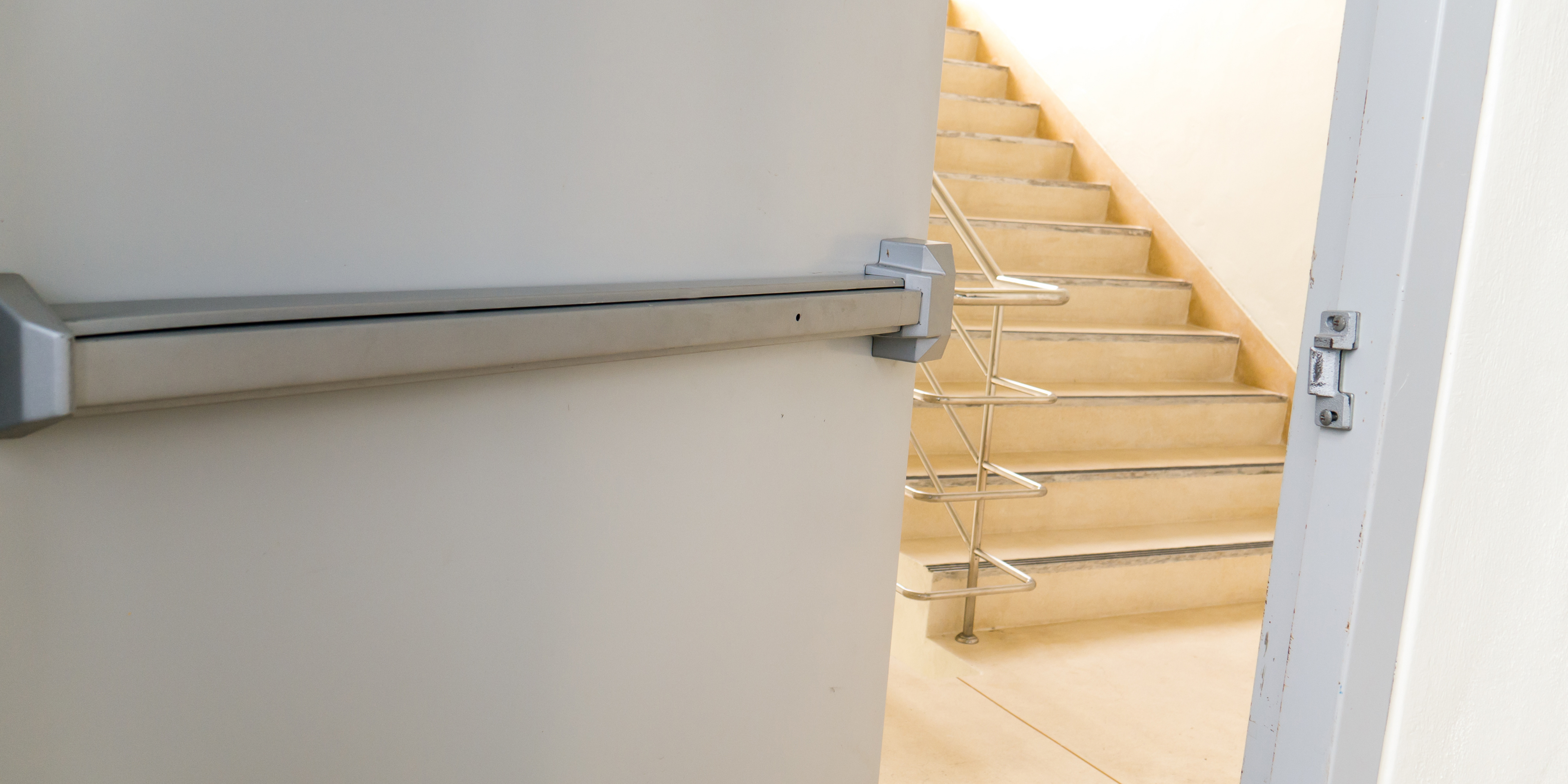
Passive fire protection also plays a role in facilitating firefighting efforts. A building that remains stable and contains the fire within specific zones allows firefighters to tackle the blaze more effectively. By preventing the fire from spreading rapidly, PFP systems create safer conditions for firefighting teams to operate in. This containment provides clear and manageable zones for firefighters to focus their efforts. Thus, improving their ability to extinguish the fire and minimise further damage. Additionally, well-implemented passive fire protection measures can reduce the amount of smoke and toxic fumes. This makes it easier for emergency responders to navigate the building and perform rescue operations.
Finally, passive fire protection is required to ensure regulatory compliance. Many regions have stringent building regulations that mandate the inclusion of passive fire protection measures to ensure overall safety. These regulations are designed to protect occupants, property and emergency responders. For example, The Building Regulations 2019 emphasises the importance of passive fire protection in construction and renovation projects. These regulations outline the standards for materials, design and construction methods to ensure that buildings can withstand and contain fires.
Compliance with these regulations is not only a legal requirement but also a fundamental aspect of responsible building design and management. By adhering to these standards, building owners and managers can avoid legal penalties and ensure that their properties meet the highest safety benchmarks.
Accreditation is needed to ensure that passive fire protection (PFP) products and systems meet stringent standards for performance and safety. These accreditations are provided by several reputable organisations that specialise in testing, inspecting and certifying fire safety. The accreditation process is essential for validating the efficacy of PFP systems. It assures building owners, managers and occupants that these systems will function as intended during a fire emergency.
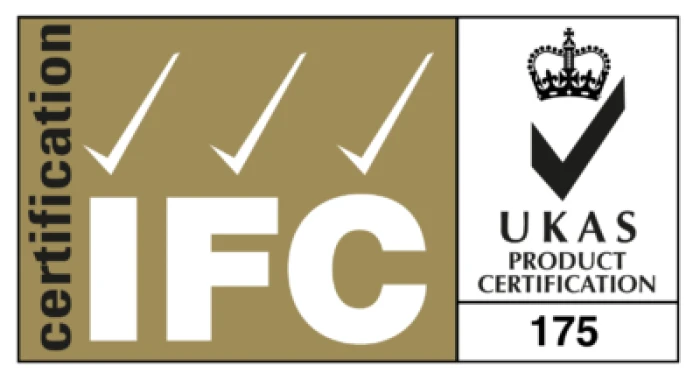
The British Standards Institution (BSI) is a leading authority in the certification of fire protection products in accordance with UK standards. BSI provides rigorous testing and certification processes to ensure that PFP systems adhere to the highest safety and performance criteria. This certification is necessary as it verifies that the products can withstand the conditions they are designed for, such as high temperatures and prolonged exposure to flames. Products certified by BSI are recognised for their reliability and effectiveness. Therefore, making them a preferred choice for construction projects across the UK.
Warringtonfire is another prominent organisation that specialises in providing comprehensive testing, inspection and certification services. With state-of-the-art facilities and expert personnel, Warringtonfire conducts extensive evaluations to determine the fire resistance and durability of PFP components. Their certification is highly respected in the industry, as it assures that the products have undergone thorough scrutiny and have been proven to perform under fire conditions.
The Loss Prevention Certification Board (LPCB) is well-known for certifying products and services to ensure they meet the required safety standards. LPCB certification covers a wide range of fire protection products, including fire doors, coatings and structural protection materials. The board’s rigorous testing protocols are designed to replicate real-world fire scenarios, ensuring that certified products provide reliable protection. LPCB certification is widely recognised and often required by building regulations and insurance companies.
Active fire protection systems are designed to detect, alert and suppress fires through some form of action. This can be either manual, such as using a fire extinguisher, or automatic, like sprinkler systems that activate in response to heat or smoke detection. These systems are proactive in nature, aiming to either extinguish the fire or control its spread immediately after detection.
The effectiveness of active fire protection systems lies in their ability to initiate rapid responses to fire incidents. For example, fire alarms alert occupants to evacuate, while sprinklers discharge water or other suppressants to douse the flames. This fast intervention can significantly reduce the size and intensity of a fire, minimising damage to property and allowing occupants to escape safely.

In contrast to active systems, passive fire protection systems are integrated into the building’s structure. They operate without the need for human intervention or mechanical activation. These systems are designed to compartmentalise the building, limiting the spread of fire and smoke. They help to maintain the structural integrity of a building during a fire. Passive fire protection measures include fire-resistant walls, floors, doors and ceilings.
The primary role of passive fire protection is to create barriers that contain fires within their initial area of origin. Fire-resistant materials and construction techniques delay the spread of flames and smoke, providing crucial time for evacuation and firefighting efforts. This containment helps prevent fires from escalating into larger, more dangerous incidents. Therefore, reducing the risk to occupants and property within the building.
While active and passive fire protection systems serve distinct purposes, they complement each other to provide a comprehensive fire safety strategy. Active systems are essential for detecting fires early and initiating immediate responses, such as suppressing flames or alerting occupants to evacuate. These systems are ideal for addressing fire emergencies quickly and effectively.
On the other hand, passive fire protection systems work silently and continuously to maintain the building’s structural integrity and contain fires within specific areas. By preventing the spread of fire and smoke, passive systems contribute to overall safety by facilitating safer evacuation routes. Their effectiveness lies in their ability to withstand fire conditions without relying on human intervention.
The optimal approach to fire safety involves integrating both active and passive fire protection systems within a building’s design and management plan. Active systems provide immediate response capabilities, mitigating the initial impact of a fire and assisting in evacuation efforts. Meanwhile, passive systems serve as a foundational layer of defence. These systems ensure that even if a fire cannot be immediately extinguished, it remains contained to its origin point. Therefore, limiting damage and allowing time for evacuation and professional firefighting intervention.
Passive fire protection works by compartmentalising a building into distinct fire-resistant sections. This involves using materials and construction methods that can withstand high temperatures and prevent the passage of flames and smoke. Key components include fire-resistant walls, floors, doors and coatings. Together, these elements create barriers that contain fire, limit its spread and maintain structural stability.
Fire-resisting walls, floors and ducts are fundamental to passive fire protection. These components are constructed using fire-resistant materials that can withstand high temperatures. They help to prevent the passage of fire and smoke between different sections of a building. They form the core of a building's compartmentalisation strategy, ensuring that a fire in one area does not easily spread to another.
Fire doors are specially designed doors that can withstand fire for a certain period, typically ranging from 30 to 120 minutes. They are essential in maintaining the integrity of fire-resisting compartments. Fire doors are equipped with intumescent seals that expand when exposed to heat, sealing gaps and preventing the spread of smoke and flames.
Fire curtains are flexible, fire-resistant barriers that can be deployed in the event of a fire to compartmentalise open spaces. They are particularly useful in places like open-ended shops and cinemas, where traditional fire doors might not be practical. Fire curtains automatically descend when a fire is detected, forming a temporary fire-resistant barrier.
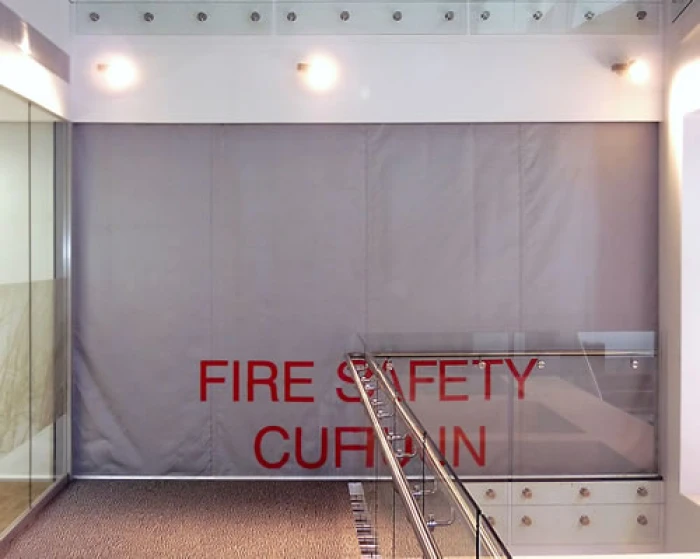
Fire retardant paints and coatings are applied to structural elements and surfaces to enhance their fire resistance. These coatings swell when exposed to high temperatures, forming an insulating layer that protects the underlying material from the effects of heat and fire. They are often used on structural steel and timber.
Steel, while strong, loses its load-bearing capacity at high temperatures. Structural steel protection involves applying fire-resistant coatings or encasing steel beams in fire-resistant materials to ensure they maintain their integrity during a fire. This is important in preventing the collapse of the building’s structure.
The responsibility for the installation and maintenance of passive fire protection systems is shared among several key parties within the construction and building management sectors. Each plays a role in ensuring that these systems are effectively implemented and consistently maintained to uphold fire safety standards.
Architects and engineers are primarily responsible for designing the overall fire protection strategy of a building. They meticulously plan and specify passive fire protection measures to ensure compliance with regulatory requirements and integration with the building's structural design. Architects and engineers select appropriate fire-resistant materials, determine fire compartmentation strategies and outline installation guidelines for contractors to follow.
Contractors and installers specialising in passive fire protection are tasked with the actual installation of these systems. They work closely with architects and engineers to execute the design plans. They ensure that all components are installed correctly and according to specifications. Using accredited products and adhering to industry standards, contractors install fire-resistant walls, floors and doors.
Building owners and managers assume responsibility for the ongoing maintenance and inspection of passive fire protection systems once construction is complete. Regular inspections and maintenance activities are essential to ensure that these systems remain fully operational throughout the building’s lifespan. Building owners and managers should schedule routine checks to identify any signs of damage, deterioration or non-compliance with fire safety standards.
09/08/2024 • by Lynsey B
We use cookies to enhance your site experience. Choose your preferences below.
